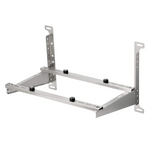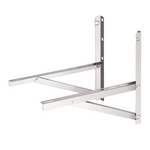When it comes to choosing a heating and cooling system for your home, two popular options are ducted and ductless systems. Understanding the pros and cons of each can help you make an informed decision that best suits your needs.
Ducted Systems: Centralized Comfort
What They Are:
Ducted systems, also known as central HVAC systems, use a network of ducts to distribute conditioned air throughout your home. A central unit heats or cools the air, which is then delivered via ducts to various rooms.
Pros:
- Whole-Home Comfort: Provides consistent heating and cooling across all rooms, ensuring uniform comfort.
- Aesthetically Discreet: Ducts and vents are typically hidden within walls or ceilings, maintaining the home's interior design.
- Air Quality Control: Central filtration systems can improve indoor air quality by filtering dust, allergens, and pollutants.
Cons:
- Energy Loss: Ducts can leak or be poorly insulated, leading to energy loss and higher utility bills.
- Installation Complexity: Retrofitting ductwork into an existing home can be invasive and costly.
- Maintenance Requirements: Ducts require regular cleaning to prevent buildup of dust and allergens.
Ductless Systems: Flexible and Efficient
What They Are:
Ductless systems, or mini-split systems, consist of an outdoor compressor unit connected to one or more indoor air handling units. Each indoor unit heats or cools a specific zone or room.
Pros:
- Energy Efficiency: Without ducts, there's no energy loss, making mini-splits more energy-efficient than ducted systems.
- Easy Installation: Installation is less invasive, requiring only a small hole for the conduit, which is ideal for homes without existing ductwork.
- Zoning Capability: Allows for individualized temperature control in different rooms, enhancing comfort and saving energy.
- Improved Air Quality: Eliminates the dust and allergens that can accumulate in ducts, leading to cleaner indoor air.
Cons:
- Higher Upfront Cost: The initial investment can be higher, especially for multi-zone systems.
- Aesthetic Considerations: Indoor units are visible and may not blend seamlessly with all interior designs.
- Maintenance Needs: Each indoor unit requires regular maintenance, including cleaning filters and checking components.
Which System is Right for You?
Consider the following factors when choosing between ducted and ductless systems:
- Home Size and Layout: Ducted systems are suitable for larger homes with existing ductwork, while ductless systems are ideal for smaller homes or additions without ducts.
- Budget: If upfront cost is a concern, ductless systems may offer savings in energy bills over time, potentially offsetting the initial investment.
- Aesthetic Preferences: Ducted systems offer a more discreet appearance, whereas ductless systems have visible indoor units.
- Energy Efficiency Goals: Ductless systems typically provide higher energy efficiency, especially in homes without existing ducts.
Ultimately, the choice between ducted and ductless HVAC systems depends on your home's specific needs, your personal preferences, and your budget. Both systems offer unique advantages, so it's important to evaluate the pros and cons carefully.
For a variety of ducted and ductless options, you can explore TOSOT Direct, which offers a range of energy-efficient HVAC systems. If you need personalized recommendations or assistance in selecting the right system for your home, feel free to reach out to their customer support team.





